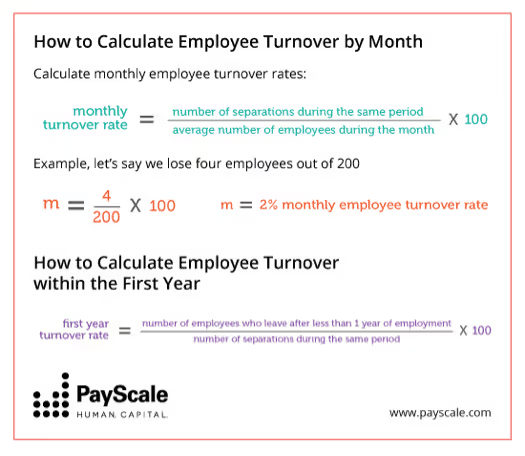Smart employers are concerned about their turnover rates, because as has been noted time and again,turnover (whether voluntary or involuntary) is expensiveanddisruptive. One article suggests replacing an employee can cost anywhere from two and a half to five times the employee’s annual wages in direct costs. Indirect costs, including lost productivity, although hard to quantify, are just as real.And yet, not all turnover should be feared. In fact, some turnover should be welcomed. The trick for employers is to retain high-performing employees while skillfully weeding out the rest.

Who are the keepers?Some hear the term “high-performing” and think of the so-called rock star employee. Well, I say forget about that!An employee doesn't have to be a "rock star" to be a keeper. Any employee who consistently solves more problems than he or she causes is a keeper in my book.On the other hand, no employer should hesitate to consider saying adios to the employee known more for sloppy mistakes (or a nasty temperament) than work accomplishments. When this employee hands in his or her resignation, the organization should breathe a sigh of relief. Whatever the temporary costs, this is good turnover.Now, what about that other kind?When turnover signals real problemsThat other kind of turnover (i.e., bad turnover) can be either high or low. HIGH turnover (whether voluntary or involuntary) signals real problems when:
- Well-performing employees are quitting as a result of employer malfeasance. We’re not talking criminal malfeasance here (although that’s obviously a problem) but instead are referring to things like neglect, disrespect, stinginess (read, subpar pay and benefits that can in no way be explained by company or employee performance or market value), or disorganized and erratic management. These missteps are all preventable and a poor reason to lose good, hardworking people.
- Too many new employees are quitting before they even start. A 2014 study by Equifax noted that more than half of new employees quit their jobs within the first 12 months of hire. However, if your rates are better than these, don’t give yourself a pat on the back just yet, because, well, these numbers are awful, and no employer should view them as aspirational. If more of your new hires are leaving than staying, it’s past time to review your hiring procedures, onboarding policies, and management practices, because something’s outta whack.
- Too many new hires are getting fired before they even start. This is the other side of that same coin. Again, someone needs to start asking what’s happening here? Are hiring procedures too lax or unfocused? Are managers too demanding or unrealistic?
All that said, LOW turnover can signal real problems, too. Low turnover isn’t cause for celebration when:
- Far too many mediocre, low, or uneven performers are calling your workplace “home.” To repeat, every employee doesn’t need to be a super star, but each employee should be expected to consistently and capably perform the duties he or she was hired to perform, or what’s the point?
- Your market share is slipping, slipping, slipping, and no one seems to know why. If no one in the company (even those who are paid to know) understands what factors are causing company performance to decline, it’s time for new blood, new ideas, and a new way of viewing things.
- Overall, employees are quick to say how much they “love” the company, but you still can’t seem to hold on to great talent. When the company has a history of spitting out its innovators, creators, and movers and shakers—leaving all the “okay” workers behind, again, something’s not right. Why can’t top talent get a toehold in the organization? Could it be company culture discourages these folks from sticking around? Something to think about …
The right pay helps drive the right kind of turnoverThe right pay (i.e., pay that’s in line with employee performance and the market) keeps good performers happy and encourages low performers or those who’ve simply outgrown their positions to move on.Remember, turnover in and of itself isn’t necessarily good or bad. The issue is who’s leaving (or in some cases, who’s NOT leaving) and why.Read more about the good, the bad, and the ugly of turnover in PayScale’s FREE white paper.





.avif)
